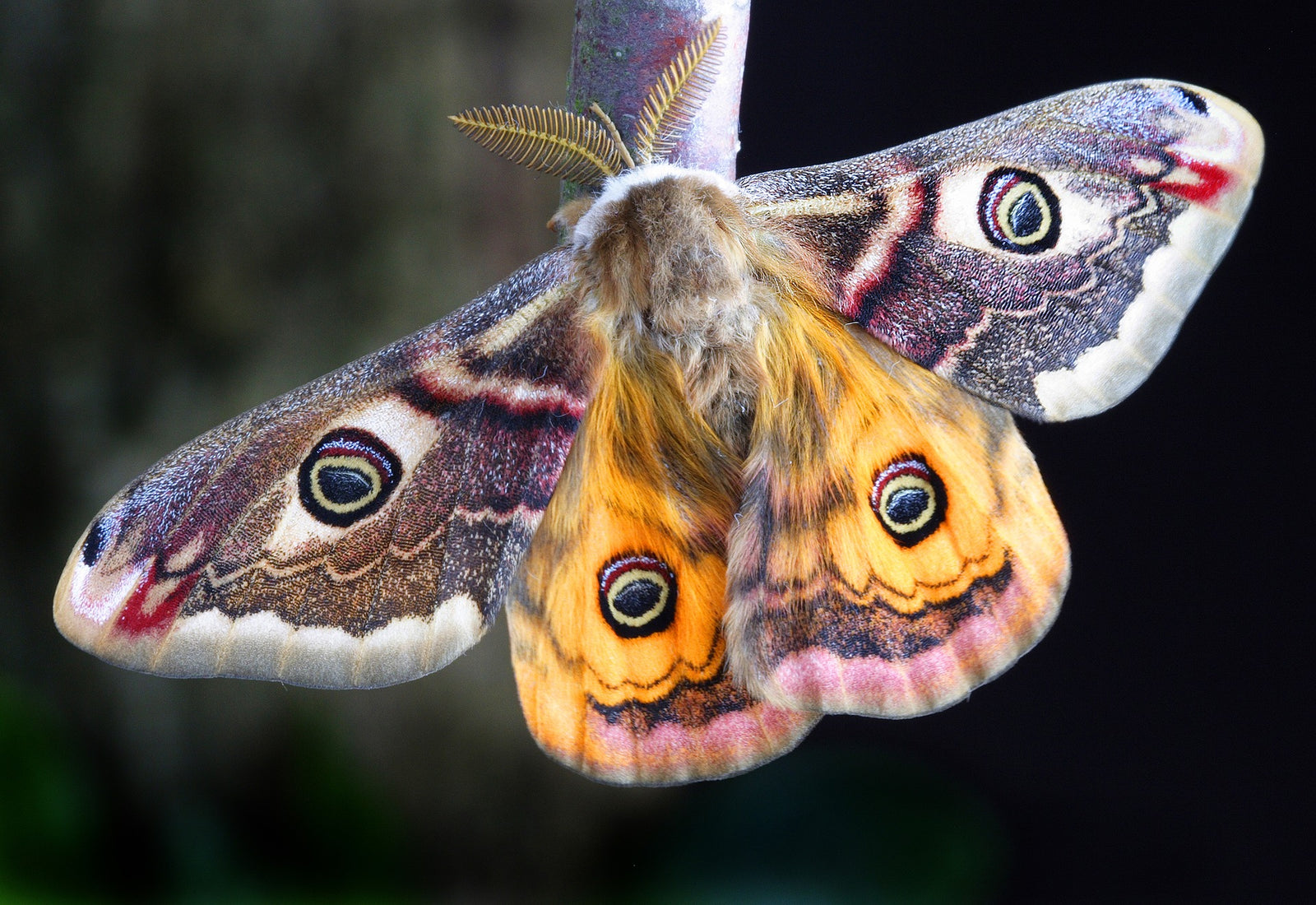Their larvae crawl through carpets, hide in the undergrowth of the sock drawer, and find cashmere particularly appealing. According to the pest treatment business Rentokil, jumpers, cardigans, and stylish woollens are under attack, with a 25% increase in the number of callouts to deal with moths.
The claimed increase defied a long-term reduction in clothing moth population as more people converted from natural fibers like wool to nylon and polyester, which the moths can't digest, and as pest control became more effective.
Some of the present growth could be attributed to lifestyle changes and the greater use of high-end materials. Cashmere has seen a minor renaissance in the United Kingdom, with companies such as Marks and Spencer, Gap, and Primark producing low-cost versions of the normally pricey fabric.
When Tesco sold a cashmere jumper for £25, the shelves were quickly gone. A comparable high-quality item would cost around £300.
"Cashmere has recently become extremely popular, and moths adore it," claimed a Rentokil spokeswoman. He also believes that the increased usage of clothing and carpet storage facilities is aiding in the proliferation of moth larvae.
"Currently, we're getting a lot of calls regarding moths. There is a serious issue that looks to be the result of the warmer winter and increased use of central heating "he stated
However, a moth and butterfly expert with the national organization Butterfly Conservation doubted that global warming was to blame for the dip. "Climate change is certainly having an effect," said Richard Fox, who administers 'Moths Count,' a recently launched program to track the fortunes of moth species. "Of all the species, I would anticipate it to affect the least would be ones very firmly associated with human buildings," he said.
He also doubts that increasing central heating is assisting clothes moths because they prefer to lay their eggs in moist, soiled regions of the house, which cleaning and heating would eliminate.
Out of the 2,500 species of clothes moths, only two are usually found in the United Kingdom. Moth enthusiasts are quick to point out that the insects aren't always to blame for your favorite suit being chewed through. Carpet beetle larvae, not moths, were shown to be responsible for 75% of textile degradation in a research conducted in the United States.
Clothes moths provide an important ecological function by breaking down wool, fur, and feathers on animal carcasses in the wild. "Clothes moths are one of the world's most efficient cleaners. If there weren't any clothes moths, we'd be knee-deep in feathers "Gaden Robinson of the Natural History Museum in London, a moth expert, remarked
Moths, on the other hand, are under attack in general. Sir David Attenborough, the natural history broadcaster, began a campaign with Butterfly Conservation last month to halt the "catastrophic" decrease in the UK moth population. Since the late 1960s, moth populations have decreased by a third, and the UK Biodiversity Action Plan designates 53 moths as national priority species for conservation.
Scientists believe that changes in land use across the country are the primary reason of the decline. "With loss of habitat, loss of hedgerows, and intensive farming, the face of Britain has altered tremendously since the 1930s," said Dr Robinson. "Pesticide use has been criticized frequently, although pesticide use has been reduced and refined since the 1950s and early 1960s, and the drop appears to be continuing."
Other moth species are also being impacted by climate change. For example, the garden tiger moth suffers particularly hard during warm, wet winters, and its population has decreased by 90% in the last 35 years. The hummingbird hawk moth, which can be seen among honeysuckle and buddleia blooms, was once a summer migratory to the United Kingdom. It is now capable of surviving the winter at this location.
Moths are key pollinators and provide food for garden birds, thus their loss is significant.
When leaving windows open at night, Rentokil recommends drawing curtains or using a fly screen to prevent moths from getting attracted to the light. Customers can choose from a variety of DIY goods, but the strong-smelling moth balls, which are filled with the chemical naphthalene, have been replaced with "killer strips," which the company claims are highly efficient yet odourless.
The claimed increase defied a long-term reduction in clothing moth population as more people converted from natural fibers like wool to nylon and polyester, which the moths can't digest, and as pest control became more effective.
Some of the present growth could be attributed to lifestyle changes and the greater use of high-end materials. Cashmere has seen a minor renaissance in the United Kingdom, with companies such as Marks and Spencer, Gap, and Primark producing low-cost versions of the normally pricey fabric.
When Tesco sold a cashmere jumper for £25, the shelves were quickly gone. A comparable high-quality item would cost around £300.
"Cashmere has recently become extremely popular, and moths adore it," claimed a Rentokil spokeswoman. He also believes that the increased usage of clothing and carpet storage facilities is aiding in the proliferation of moth larvae.
"Currently, we're getting a lot of calls regarding moths. There is a serious issue that looks to be the result of the warmer winter and increased use of central heating "he stated
However, a moth and butterfly expert with the national organization Butterfly Conservation doubted that global warming was to blame for the dip. "Climate change is certainly having an effect," said Richard Fox, who administers 'Moths Count,' a recently launched program to track the fortunes of moth species. "Of all the species, I would anticipate it to affect the least would be ones very firmly associated with human buildings," he said.
He also doubts that increasing central heating is assisting clothes moths because they prefer to lay their eggs in moist, soiled regions of the house, which cleaning and heating would eliminate.
Out of the 2,500 species of clothes moths, only two are usually found in the United Kingdom. Moth enthusiasts are quick to point out that the insects aren't always to blame for your favorite suit being chewed through. Carpet beetle larvae, not moths, were shown to be responsible for 75% of textile degradation in a research conducted in the United States.
Clothes moths provide an important ecological function by breaking down wool, fur, and feathers on animal carcasses in the wild. "Clothes moths are one of the world's most efficient cleaners. If there weren't any clothes moths, we'd be knee-deep in feathers "Gaden Robinson of the Natural History Museum in London, a moth expert, remarked
Moths, on the other hand, are under attack in general. Sir David Attenborough, the natural history broadcaster, began a campaign with Butterfly Conservation last month to halt the "catastrophic" decrease in the UK moth population. Since the late 1960s, moth populations have decreased by a third, and the UK Biodiversity Action Plan designates 53 moths as national priority species for conservation.
Scientists believe that changes in land use across the country are the primary reason of the decline. "With loss of habitat, loss of hedgerows, and intensive farming, the face of Britain has altered tremendously since the 1930s," said Dr Robinson. "Pesticide use has been criticized frequently, although pesticide use has been reduced and refined since the 1950s and early 1960s, and the drop appears to be continuing."
Other moth species are also being impacted by climate change. For example, the garden tiger moth suffers particularly hard during warm, wet winters, and its population has decreased by 90% in the last 35 years. The hummingbird hawk moth, which can be seen among honeysuckle and buddleia blooms, was once a summer migratory to the United Kingdom. It is now capable of surviving the winter at this location.
Moths are key pollinators and provide food for garden birds, thus their loss is significant.
When leaving windows open at night, Rentokil recommends drawing curtains or using a fly screen to prevent moths from getting attracted to the light. Customers can choose from a variety of DIY goods, but the strong-smelling moth balls, which are filled with the chemical naphthalene, have been replaced with "killer strips," which the company claims are highly efficient yet odourless.





